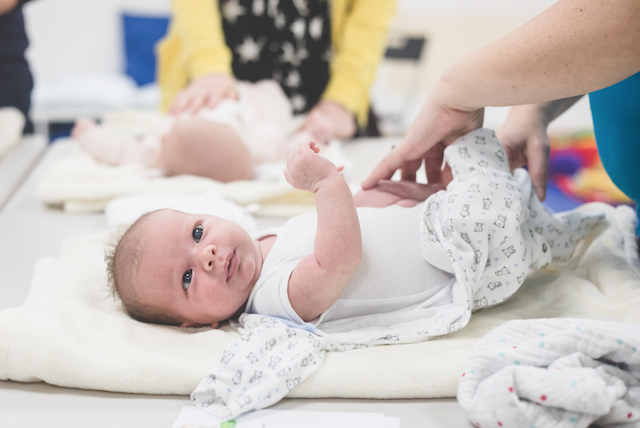For generations, baby powders have been a go-to product for keeping babies’ skin dry and preventing diaper rash. However, recent concerns about the safety of certain ingredients have made parents more cautious. While baby powders can still be used safely, it’s crucial to understand the potential risks and how to minimise them. Here are important precautions for using baby powders with newborns, helping you make informed decisions to keep your baby safe and comfortable.

Understanding the Risks of Baby Powder
Traditional baby powders often contain talc, which can pose respiratory risks if inhaled. Talc has also been linked to other health concerns, leading to some legal and safety debates. On the other hand, cornstarch-based powders are generally considered safer, as the particles are larger and less likely to be inhaled. Some talc-based powders have been subject to lawsuits due to concerns about contamination with asbestos, which you can read more online to learn about the potential health risks and legal actions involved. While manufacturers are working to ensure safety, parents need to be aware of these issues when choosing a product.
Choosing Safe Ingredients
One of the best ways to ensure safety is to carefully read the labels and choose baby powders made with gentle, non-toxic ingredients.
- Natural vs. Synthetic Ingredients: Opt for powders that use natural ingredients, such as cornstarch, arrowroot powder, or plant-based alternatives. These options are less likely to irritate and are safer for babies with sensitive skin.
- Avoiding Harmful Additives: Steer clear of powders with fragrances, parabens, and other chemicals that may irritate the skin. Fragrance-free and hypoallergenic options are often better suited for newborns.
How to Apply Baby Powder Safely
Proper application is key to reducing risks and ensuring that baby powder is used safely and effectively.
Step-by-Step Guide
- Shake the Powder into Your Hand First: Instead of sprinkling powder directly onto the baby’s skin, shake a small amount into your hand to minimise airborne particles.
- Apply to Dry Skin: Make sure the baby’s skin is completely dry before applying the powder. This will help prevent clumping, which can lead to skin irritation.
- Avoid the Face and Respiratory Area: Never apply powder near the baby’s face or nose. This reduces the risk of inhalation, which can cause respiratory issues, especially in newborns.
- Hygiene Tips: Always wash your hands before and after applying baby powder to maintain hygiene. Store the powder in a cool, dry place away from moisture, which can cause it to clump or become contaminated.

Alternatives to Traditional Baby Powders
If you’re concerned about the safety of baby powders, several alternatives can help keep your baby’s skin dry and rash-free.
- Creams and Ointments: Diaper creams and barrier ointments are effective at preventing moisture from causing diaper rash. Look for products with natural, skin-soothing ingredients like zinc oxide, Shea butter, and coconut oil.
- Natural Dusting Powders: Many companies now offer natural dusting powders that do not contain talc or artificial additives. These are typically made with cornstarch, arrowroot powder, or kaolin clay, providing a safer alternative to traditional baby powders.
When to Avoid Using Baby Powder Entirely
There are certain situations where it may be best to avoid using baby powder altogether, even if you have a safer, natural option.
- Skin Irritation or Rashes: If your baby has sensitive skin, eczema, or a diaper rash, using baby powder can sometimes make the condition worse. In such cases, it’s best to consult a paediatrician for recommendations on gentle skin care products.
- Premature Babies or Babies with Respiratory Issues: Baby powders, even those that are cornstarch-based, can pose risks for premature infants or those with respiratory conditions.
Understanding Recent Regulatory Changes
Due to health concerns, there have been changes in how baby powders are regulated and marketed. Staying informed can help parents make safer choices.
- FDA Guidelines and Recommendations: The U.S. Food and Drug Administration (FDA) has been monitoring the safety of talc-based products, and there have been efforts to regulate and test for potential contaminants. Some companies have voluntarily switched to cornstarch-based formulas to address safety concerns.
- Labelling and Consumer Awareness: Always read labels carefully to see if the powder contains talc. Some brands indicate if their products are talc-free, making it easier for parents to choose safer options. Awareness campaigns and updated guidelines have helped consumers make more informed decisions when selecting baby powders.
Baby powders can still be a helpful tool for keeping your newborn comfortable, but it’s important to use them wisely and safely. By understanding the risks associated with certain ingredients, choosing safer products, and applying powder carefully, parents can minimise potential hazards. Alternatives like creams, natural dusting powders, and breathable diaper liners provide additional options for managing moisture and preventing diaper rash.



